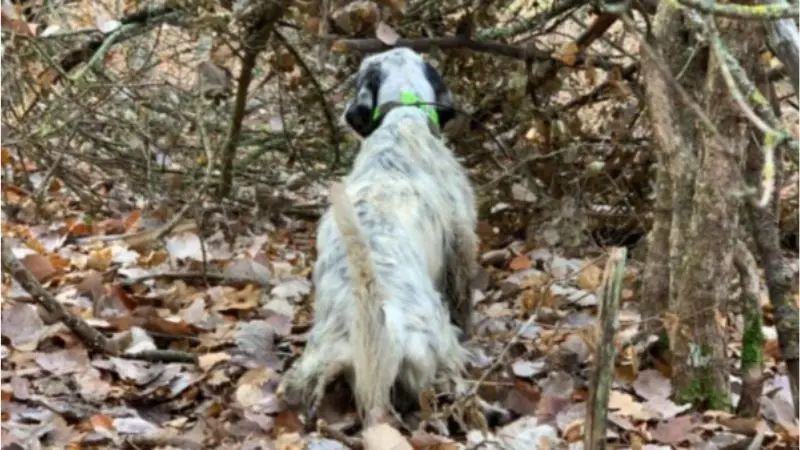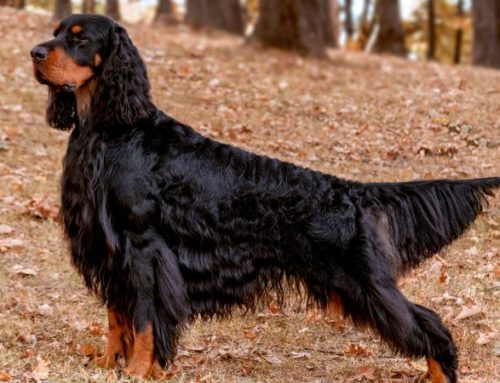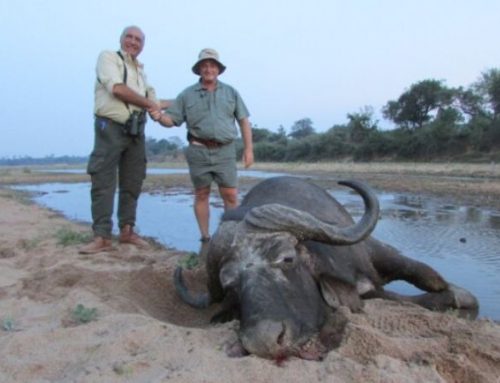Hunting with pointing and retrieving dogs is certainly a discipline that engages the passionate hunter 365 days a year.
The bond created between the retrieving dog and its owner goes far beyond simple companionship; it is a constant, daily relationship. The dog needs care, love, but above all, understanding. When a hunter, or better yet, a dog lover, achieves this goal, they will get the most out of their dog, not only while hunting.
What stimulates the dog in the hunting action?
Like humans, dogs also have a character and a physique, they belong to canine breeds that characterize them for particular attitudes and characteristics and direct them towards a type of hunting compared to others.
Pointing dogs, or pointing dogs, are so named for their attitude to signal to the hunter the wild, immobilizing themselves, with the front paw often raised, as soon as they sense its presence.
After a gradual and slow approach, here comes the real point. Fixed gaze on the point of interest and a characteristic expression that leaves no doubt to the hunter: the dog has identified the wild and has it right in front of him.
Every breed is distinguished by the type of point and pose it assumes.
The Italian Kennel Club (ENCI) recognizes 36 pointing breeds, both short-haired and rough-haired, but the most popular are definitely the Italian pointer, English setter, English pointer, spinone, and Brittany.
Each of them, depending on their way of being and their attitudes, will be directed towards a specific type of hunting: woodcocks, partridges, or quails. These are the animals that the hunter prefers for hunting with pointing dogs.
What characterizes the woodcock dog?
The woodcock dog must have a wide but connected search with the hunter, must demonstrate inventiveness, and inspect places where a woodcock could be stationary. A woodcock dog must have steady nerves; often the woodcock uses cunning to evade the dog that stalks it. It is precisely this that makes woodcock hunting unique; each woodcock is a story in itself.
One of the most coveted paradises for this type of hunting is the Isle of Bute, where beech and oak forests reproduce the habitat of our Apennines with a remarkable concentration of woodcocks. During a day of hunting, you can have an average of 25-30 encounters. It is not rare for the hunter to end the day with a bag of even 10 specimens, but we all know that it is not the number of kills that makes the true hunter.
A good hunter with a skilled dog must find and stop as many woodcocks as possible and reward the dog with some kills.
The ideal is to choose hunting programs that offer packages from 4 to 6 days of hunting, thus giving your dog the opportunity to acclimatize to the new environment and perform at its best during the hunt.
In Scotland, on the Isle of Bute, thorns and brambles are almost nonexistent in the hunting grounds, unlike other places in Europe, such as Italy, where the woodcock is often hunted in difficult places with dense vegetation and brambles.
Here, anti-thorn technical clothing is essential.
This charming island is a small Scottish gem for hunters with pointing dogs. You hunt on lands with a particular charm, where hornbeams, pines, and brooms frame a magical scenery.
Being an island and considering it is Scotland, famous for its rains, clothing should prefer garments that repel water.
The season in Scotland is short, starting in mid-late November and ending on January 31st. A good program includes pre-established departures with packages of at least 4 days of hunting.
For woodcock hunting, the recommended guns are over-and-unders or side-by-sides, considered more “ethical” both for the possibility of picking up cartridges after the shot and for the 2 shots. The barrel length ranges from 61 to 65 cm, with chokes ranging from cylinder, 4* stars to a maximum of 3* stars.
The type of ammunition, i.e., the caliber and weight as well as the size of the shot, remains a very personal choice. You can use a 12-gauge with No. 9 shot with a maximum of 36 gr, or a 20-gauge, with No. 8 shot with a maximum of 28 gr. To avoid pollution, always choose ammunition with felt wads.
What characterizes the partridge dog?
Partridges, the real ones, are fantastic animals in terms of behavior, but especially for our dog. A partridge dog, as the specialist is called, learns to use the wind and goes up the wedge of the emanation interrupting the run in a typical skid, warns and goes up slowing down or tearing depending on the breed, must always give the impression that the contact with the animal is hanging by a thread and that this thread leads him to the covey of partridges.
The partridge can be considered the “university of hunting.” Partridge hunting is practiced in open spaces, among clover and stubble, interrupted by gerbils and bushes (small thickets that act as windbreaks dividing the crops in the plains). In these places, you can enjoy the dog’s work, enjoy its style that characterizes the breed, and when a subject stops and leads you to conclude an action on a covey of partridges, the excitement reaches its peak.
Macedonia can be described as the paradise of the Partridge, on an immense plateau where the wind is constant, where local agriculture does not use pesticides or herbicides, but still cultivates with traditional methods, the Partridge reigns supreme.
In spring, censuses are carried out on pairs, without a gun but only with the help of the dog. This allows monitoring the health status of the Partridge population, consequently understanding the harvest for the season.
In Macedonia, a harvest of 4 partridges per day per hunter is allowed, it is strictly prohibited to use unsuitable cartridges, i.e., only cartridges with a container can be used, the lead must be No. 7 or No. 6, barrels shorter than 65 cm are prohibited, the barrels must have a maximum choke of 3* stars, 4* and cylindrical or worse rifled chokes are prohibited. These precautions are important because in the autumn period, the partridges gather in flocks, and shooting into the flock without these precautions would injure numerous partridges with negative consequences. The partridge, for the hunting enthusiast, is an immensely valuable asset.
Hunting areas particularly suited in Macedonia are located a few kilometers from the Bitola area, which can be easily reached in 2-3 hours by plane to Skopje or by ferry to Igoumenitsa.
And the partridge dog?
The Coturnice Alectoris Graeca, like the partridge, is a cunning animal, its habitat is rocky mountains, ravines, and sometimes very rugged valleys. A partridge dog must have great endurance, strong feet, and must be a gladiator of hunting.
Distrustful animals when in a flock, partridges know their territory perfectly, when something doesn’t add up they fly from one valley to another. Partridge hunting is very physical and tests both dogs and hunters, for some aspects it can be compared to hunting typical Alpine game, like in Lapland, where Nordic and white partridges impose the above.
The weapon used for this hunting is similar to that used for partridges, it can be a 12-gauge with 3* and 2* star chokes and ammunition with No. 7 lead and 36 gr with preferably felt wad.
You can find partridge hunting in Macedonia, where you can still live the dream of hunting native partridges and partridges with your own dog.
The medium and high mountains of this country are a magical place where entire groups of partridges (Alectoris graeca) still live undisturbed.
Up there, human presence is limited only to shepherds who during the autumn bring large flocks of sheep to pasture. Their work is fundamental because thanks to this, the meadows where the partridge grazes and eats fresh grass shoots are constantly renewed.
It is a real hunting challenge for hunters and retrieving dogs.
The goal of the hunter with a pointing and retrieving dog, regardless of the breed of the dog and the type of hunting he prefers, is certainly to achieve the maximum harmony and harmony with his companion with whom to face every day of hunting, and not only!










